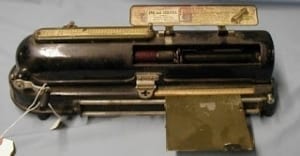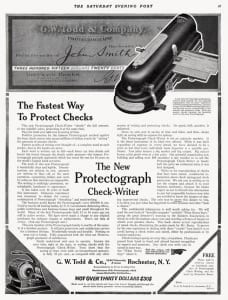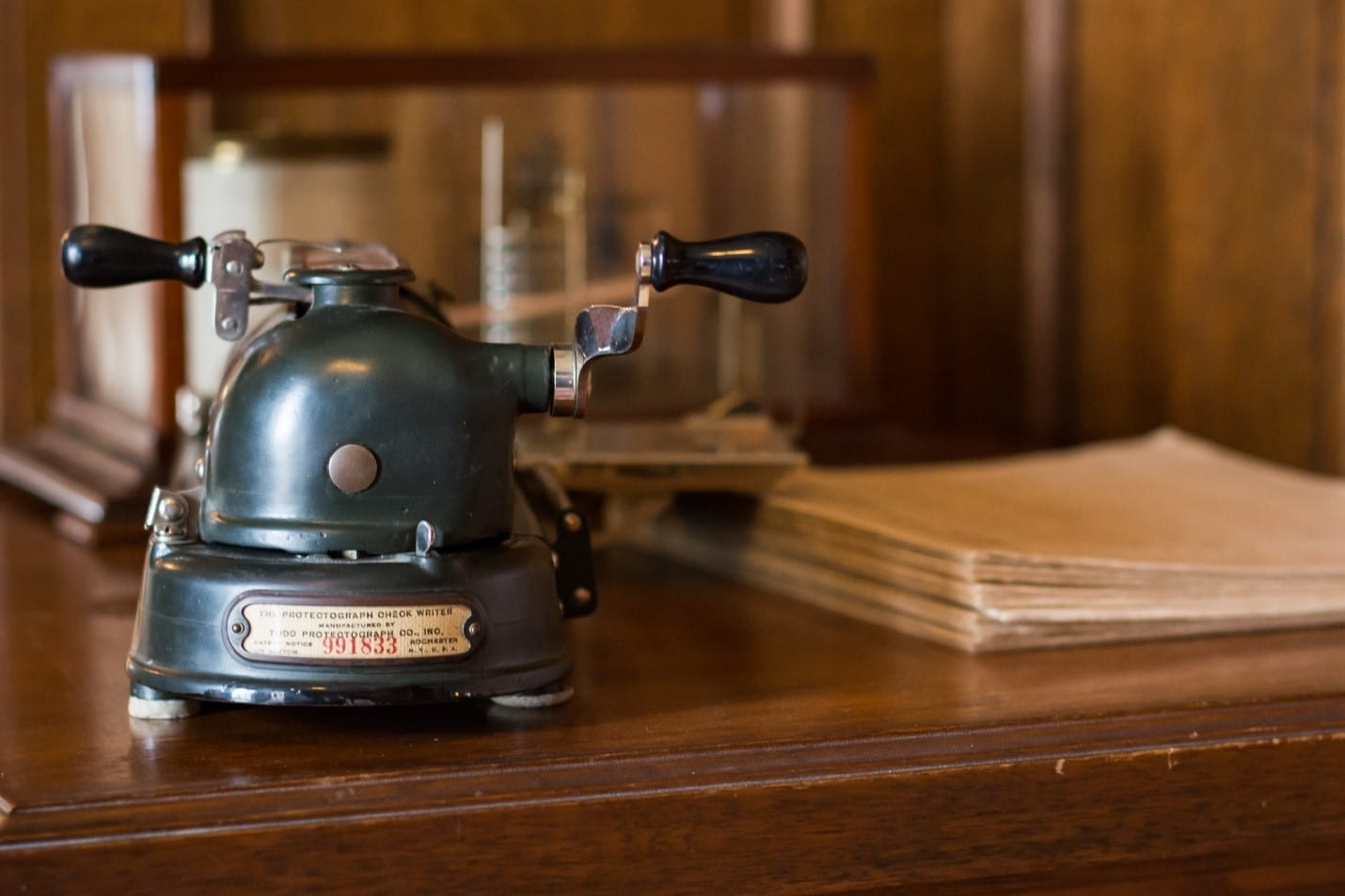According to the 2010 US Federal Reserve Payment Study, people write 24.4 billion cheques each year, either personal or for business-related purposes.
History of Cheques
The advent of cheques emerged as it became recognized that the carrying of large amounts of cash was troublesome, physically cumbersome, and security wise unsafe. Historians believe that cheques, as we know them, grew more prominent in the 1500s, originating in Holland, when Amsterdam grew into a significant trading centre. Although cheques as a concept, presenting a banker with a document from a third party to receive money, can be traced to India, 321 BC and the adesha, merchants using letters of credit as payment.

Protectograph Cheque Writer
Within our collection is a cheque writer that was used by the secretarial staff of the McLaughlin Family, when the social and business secretaries who worked in the alcove, the secretary’s office, outside of the Billiard Room, would have been issuing cheques. Introduced in 1913, our model was advertised by the GW Todd Company from 1913 to 1930. GW Todd products were the best-known cheque protectors in the early 1900s. Located in Rochester, New York,
GW Todd Company had a sales office in Toronto through GV Purves.
It is widely believed that the word cheque originated in England in the 1700s when serial numbers were applied to papers as a method of keeping track or in check. It is in 1717 that the Bank of England begins to use pre-printed forms, drafts, to prevent fraud.
It is not until 1959 that a standard was introduced with machine-readable characters, so the “Protectograph” was the go-to method to prevent fraud in the early 20th century. Note how the ad to the left markets itself, “writes the amount in dollar and cents to the penny, in two vivid colours…cheque raising is a genuine danger to every businessman…”


